The history of the Shri Ram Mandir in Ayodhya is deeply rooted in Hindu mythology. One can trace its origins to ancient times. The story of the temple revolves around the revered figure of Lord Rama and the sacred epic, Ramayana. This narrative is rich in mythological characters, elements, and cultural significance. It has played a crucial role in shaping the religious beliefs and sentiments of millions of Hindus over the centuries.
Ayodhya as the Sacred Abode of Lord Ram
Ayodhya is the birthplace of Lord Rama. It holds a profound significance in Hindu tradition. The city is depicted as a symbol of dharma (righteousness) and an ideal kingdom. There is a sacred belief that Ayodhya is the divine abode of Lord Rama. It has been passed down through generations. This has led to a deep emotional and spiritual communion for Hindus.
The Ramayana describes Ayodhya as a splendid city. It is adorned with grand palaces, lush gardens, and loyal citizens. The narrative paints a vivid picture of the utopian society under Rama’s rule. It emphasizes the principles of justice, virtue, and compassion. The association of Ayodhya with Lord Rama’s birth transforms the city into a sacred pilgrimage site for devotees.
The term “Janmabhoomi” means “birthplace” in Sanskrit. Tradition identifies the exact spot in Ayodhya where Rama is believed to have been born as the sacred Janmabhoomi. Devotees consider this location to be particularly auspicious. So, it became a focal point of significant historical and religious controversy in later centuries.
Controversy
The controversy revolves around the construction of the Babri Mosque in Ayodhya during the Mughal period. According to historical accounts, the mosque was built in the 16th century by Mir Baqi, a commander of the Mughal emperor, Babur. Local Hindu belief, rooted in the Ramayana, asserts that the mosque was constructed on the same spot regarded as the birthplace of Lord Rama. These conflicting claims over the Janmabhoomi gave rise to disputes that lasted over the centuries. The mosque has stood as a symbol of religious and cultural coexistence. It has also become a source of contention, especially in the modern era.
Supreme Court Verdict
After the Babri Mosque incident, legal battles ensued over the ownership and status of the disputed site. Various title disputes and legal proceedings came up, with multiple parties staking claims to the land. The case reached its turning point with the Supreme Court of India delivering a landmark verdict on November 9, 2019. The court ruled in favour of the construction of a Ram temple at the Janmabhoomi site, while also directing the allocation of a separate piece of land in Ayodhya for the construction of a mosque.
Formation of the Shri Ram Janmabhoomi Teerth Kshetra
Following the Supreme Court verdict, the Indian government formed the Shri Ram Janmabhoomi Teerth Kshetra, a trust entrusted with the responsibility of overseeing the construction of the Ram temple. The trust was given the responsibility of fundraising, planning, and executing the construction.
Commencement of Temple Construction
The construction of the Ram temple officially commenced in March 2020, with the foundation stone-laying ceremony conducted by Prime Minister Narendra Modi on August 5, 2020. This event marked a significant moment in the cultural and religious history of Ayodhya and India as a whole. The construction process faced temporary suspensions due to the COVID-19 pandemic. However, the project continued, and by May 2023, substantial progress had been made, with 70% of the groundwork and 40% of the roof work completed.
Consecration and Ramotsav
Preparations for the “Pran Pratishtha” (consecration) ceremony have been in full swing, with the Uttar Pradesh government allocating ₹100 crores for ‘Ramotsav.” It is a series of religious events across 826 local bodies. The events commenced in December 2023. They will culminate in grand celebrations from Makar Sankranti on January 14-15 until the inauguration of the Ram temple on January 22, 2024.
Prime Minister Narendra Modi, along with other political leaders and dignitaries, has been invited for the consecration ceremony. The guest list includes industrialists, scientists, actors, army officers, spiritual leaders, and awardees.
Building Description
- This 3-storied temple is an earthquake-resistant structure.
- The sound of the bell can be heard up to a distance of 15 Km.
- The idols are made up of 60 million years old Shaligram Rocks, brought from the Gandaki River
- The estimated age of the temple structure is 2500 years.
- The Bell is made of Astadhatu (Gold, Silver, Copper, Zinc, Lead, Tin, Iron, and Mercury). The Bell weighs 2100 Kg.
- Its doors are made of Teakwood and are gold-plated.
- It has 392 pillars and 44 doors.
Other Features of Shri Ram Mandir
- The main sanctum of the temple has the idol of Shri Ram Lalla.
- On the first floor, there is a Shri Ram Darbar.
- The temple consists of 5 Mandapas: Nritya Mandapa, Rang Mandapa, Sabha Mandapa, Prarthana Mandapa, Kirtan Mandapa
- On all four corners of the periphery (Parikota), four temples have been dedicated to Suryadev, Mother Bhagwati, Lord Ganesha, and Lord Shiva.
- In the northern arm, there will be a temple of Goddess Annapurna, and in the southern arm, there will be a temple of Lord Hanuman.
- Within the temple complex, other temples will be dedicated to Maharishi Valmiki, Maharishi Vashishta, Maharishi Vishwamitra, Maharishi Agastya, King Nishad, Mata Shabari, and the Devi Ahilya.
- In the southwest part, the ancient temple of Lord Shiva on the Navratna Kubera Hill will be renovated. A statue of Jatayu will be installed.
Places to Visit in Ayodhya
There are many places in Ayodhya for devotees and tourists alike. They symbolize the faith and devotion of millions of people in the country. Some of them are as under.
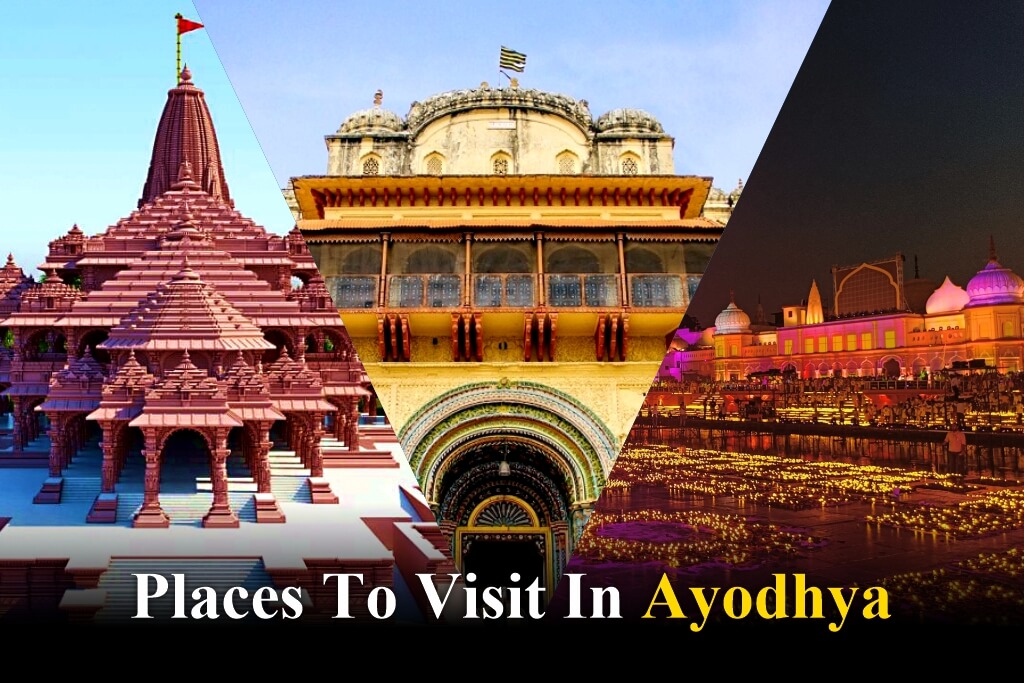
1. Ram Janmabhoomi Temple
The birthplace of Lord Rama is symbolic of the Ram Janmabhoomi Temple. It has a religious importance and is visited by pilgrims and tourists alike.
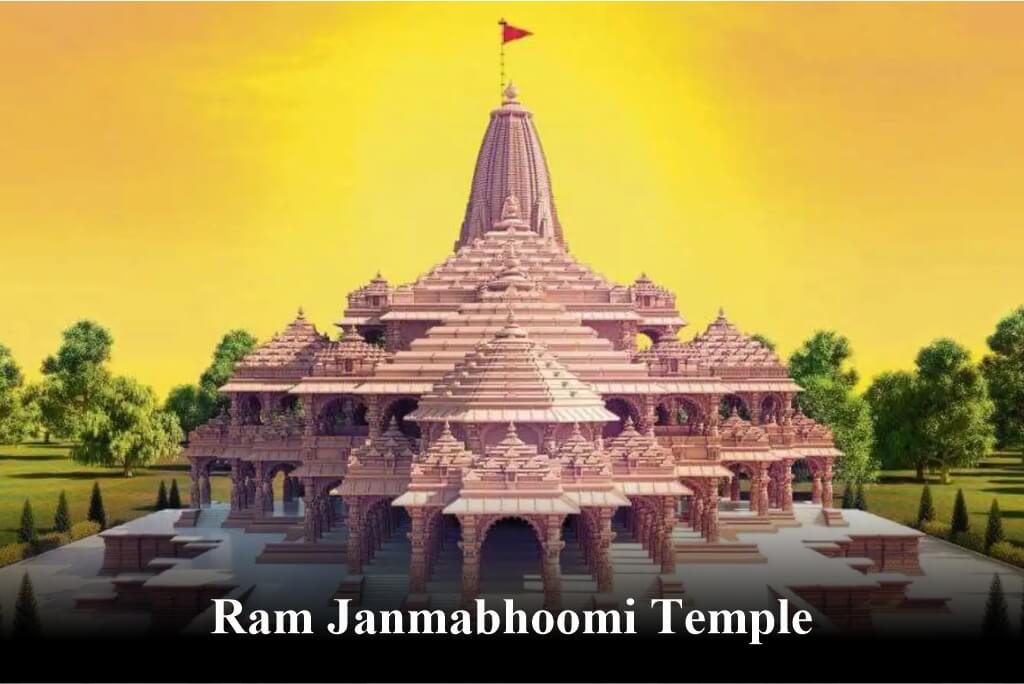
2. Hanuman Garhi
Hanuman Garhi is a temple dedicated to Lord Hanuman. It is situated on a mound and offers scenic views of Ayodhya. Devotees visit this temple to seek the blessings of Lord Hanuman.

3. Kanak Bhavan
This beautiful palace was gifted to Sita by her mother after her wedding to Lord Rama. The palace has ornate carvings and is dedicated to Lord Rama and Sita.

4. Treta Ke Thakur
A temple dedicated to Lord Rama, it is believed to be the place where Lord Rama performed the Ashvamedha Yajna.

5. Swarg Dwar
Translating to the “Heavenly Gate,” the Swarg Dwar is a sacred spot where it is believed that Lord Rama ascended to heaven. Pilgrims often visit this site.
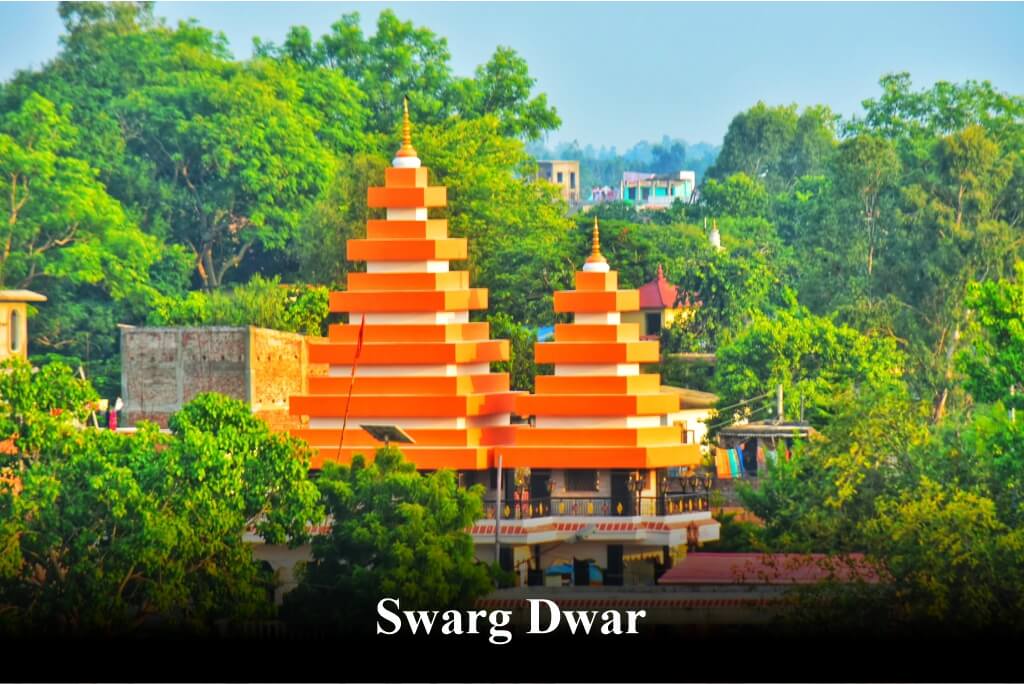
Nearby Places to Visit in Ayodhya
There are many places in the vicinity of Ayodhya that you can visit to make the most of your Ayodhya tour. Scroll down to know more.

1. Chhoti Chhawni
Chhoti Chhawni is a complex of temples dedicated to various deities. Chhoti Chhawni is a significant religious site near Ayodhya.
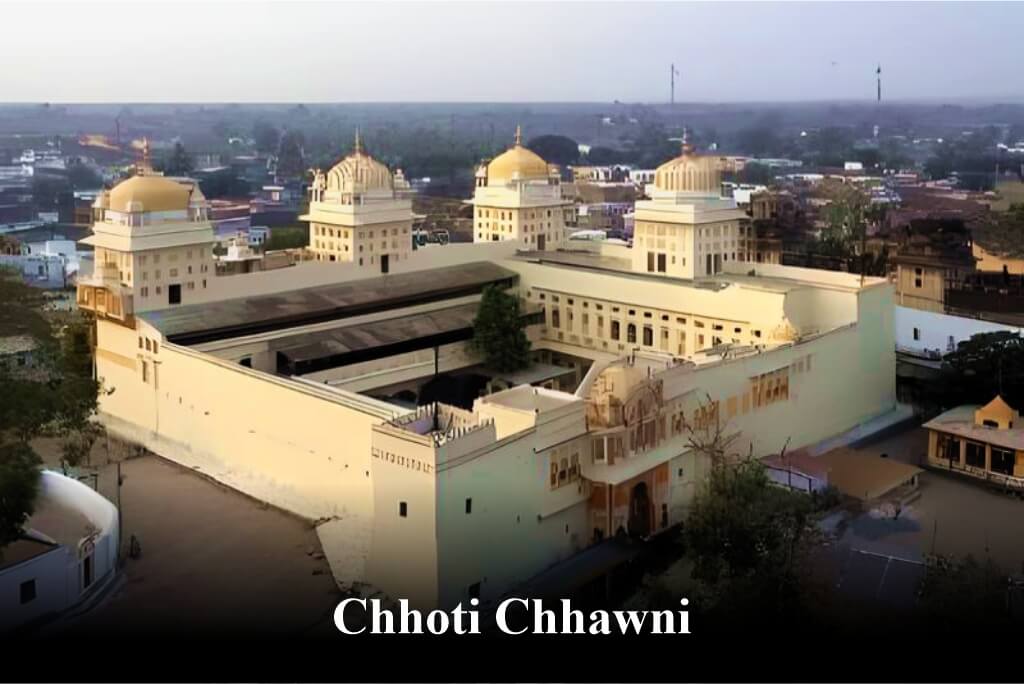
2. Nageshwarnath Temple
This ancient temple is dedicated to Lord Shiva. It is believed to be the spot where Lord Rama performed the last rites of King Dasharatha, his father.

3. Guptar Ghat
Guptar Ghat is located on the banks of the Sarayu River. It is a serene spot where Lord Rama is said to have taken a dip. It’s a peaceful place for reflection and prayer.

4. Faizabad
Located a few kilometers from Ayodhya, Faizabad is another historical city with architectural gems like the Faizabad Fort and Gulab Bari.
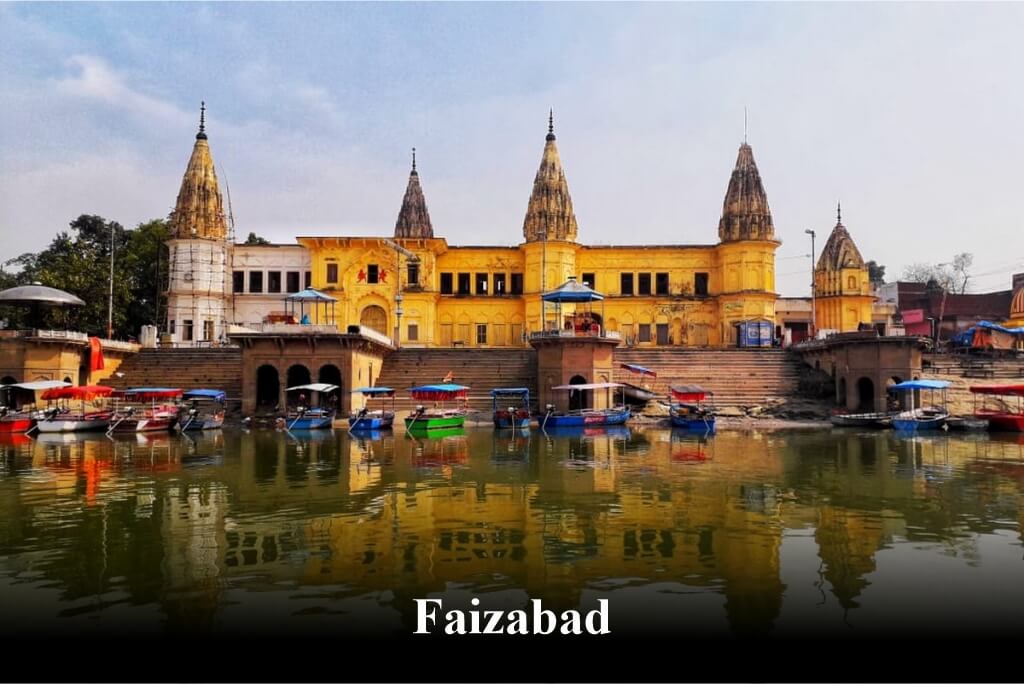
5. Ayodhya Archaeological Museum
This museum consists of artifacts and sculptures dating back to the Gupta and Kushan periods. It thus provides insights into the region’s rich history.
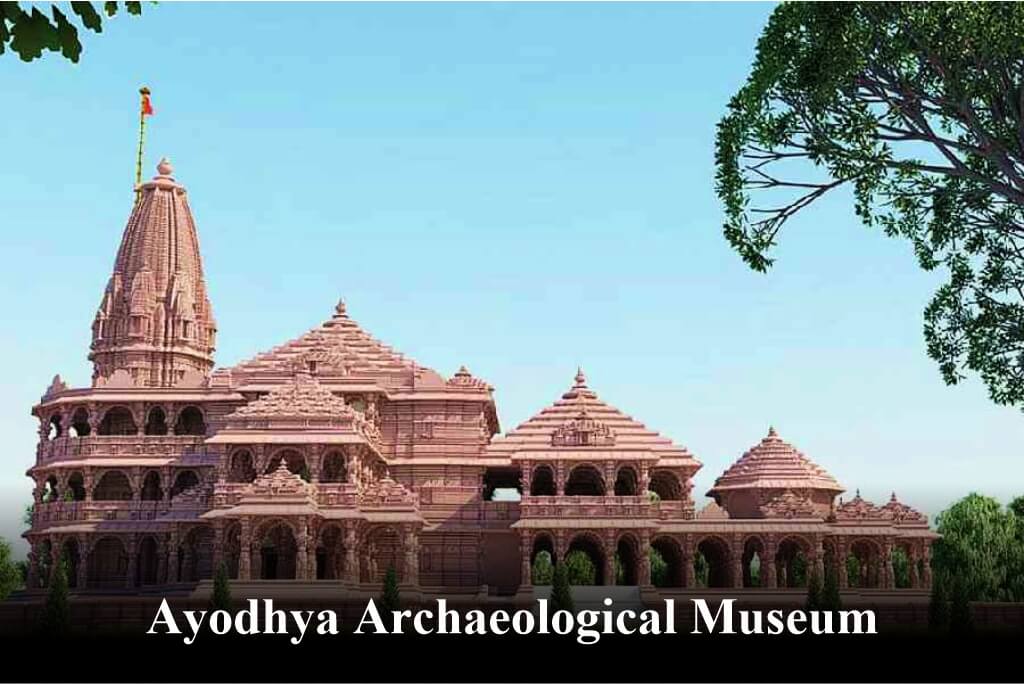
6. Lakshman Ghat
Situated on the banks of the Sarayu River, Lakshman Ghat is associated with Lord Lakshman. He is the brother of Lord Rama. Pilgrims often visit to perform rituals and prayers.

While in Ayodhya, visitors can also explore the local markets and taste the traditional delectable cuisine of the region. The city is known for its religious and cultural significance, hence it is a must-visit destination for those interested in Indian mythology and history.
Final Thoughts
In conclusion, along with being a testament to religious faith, Shri Ram Mandir stands as an architectural marvel. It is a living telltale sign of the spiritual heritage of India and the enduring legacy of Lord Rama. This temple has indeed put Ayodhya on the spiritual map of India today and forever.
In the event of around 100 chartered planes expected to arrive in Ayodhya, only officials and dignitaries with special invites from the Ram Temple Trust are allowed to enter Ayodhya.
According to the sacred religious texts, on this day, Lord Vishnu took the incarnation of a tortoise and helped in the churning of the ocean. Lord Ram is an incarnation of Lord Vishnu. Therefore, this day is considered very auspicious for the inauguration of Ram Mandir.
In Hinduism, Pran Pratishtha is a sacred ceremony where the divine essence, referred to as prana, is invoked. Thereafter, it is transferred into an idol or image of a deity in a temple or at home.
The Ram Mandir will be completed by December 2024. Right now, only the first floor has been completed.








